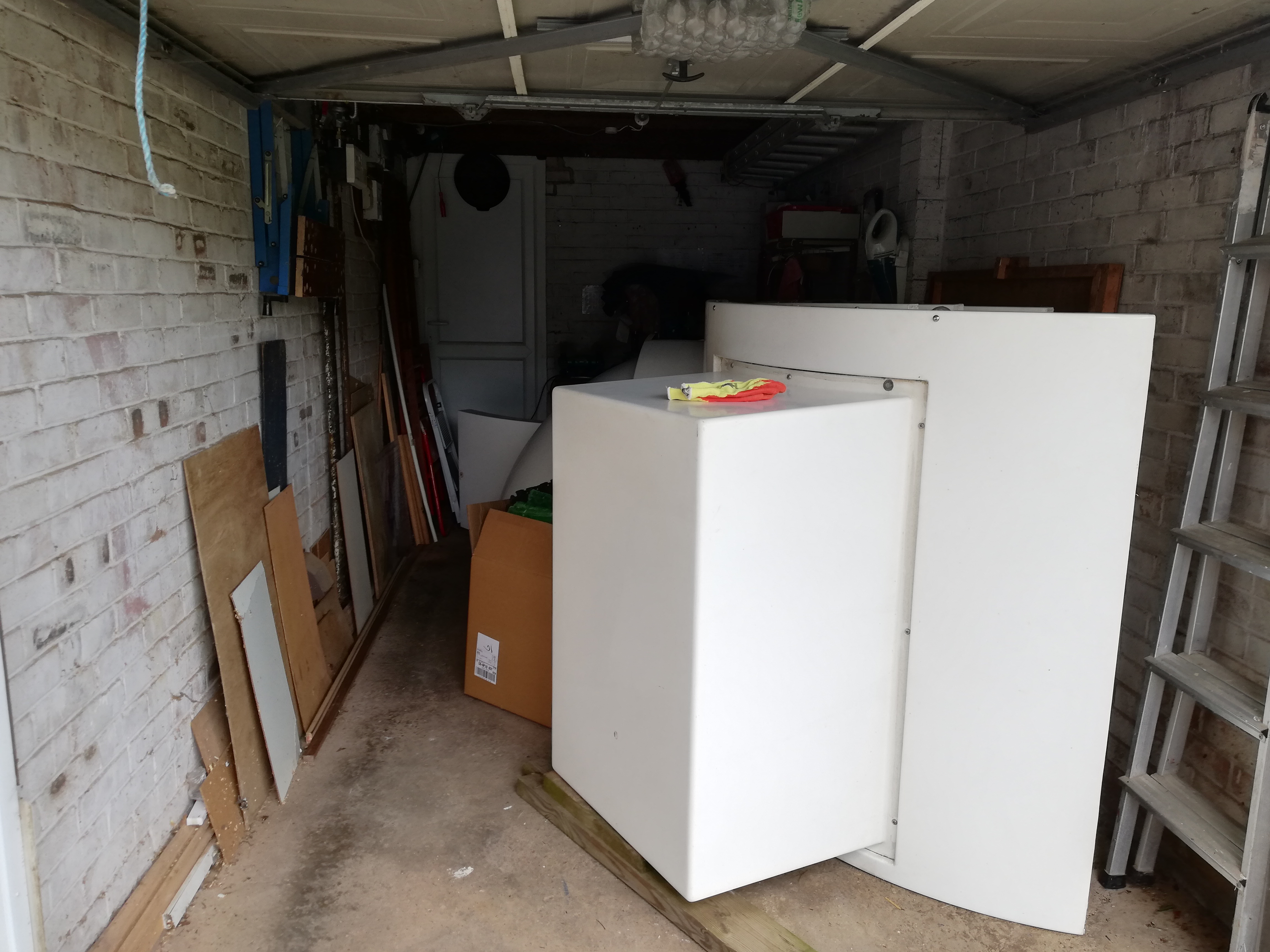
On 22nd August 2023, we went to Newport, South Wales to collect the Pulsar Dome.
I had hired a medium wheel base transit type van for the day for the journey.
The outward trip was remarkably uneventful, we knew the way as we'd previously been for a visit to see the observatory in situ.
It took about 45 minutes to load it up and it just fitted in very nicely. Either i was lucky or remarkably adept at deciding on the size of the van!
The homeward journey also went well, and the Pulsar was unloaded and stored in my garage ready for assembly at a later date.
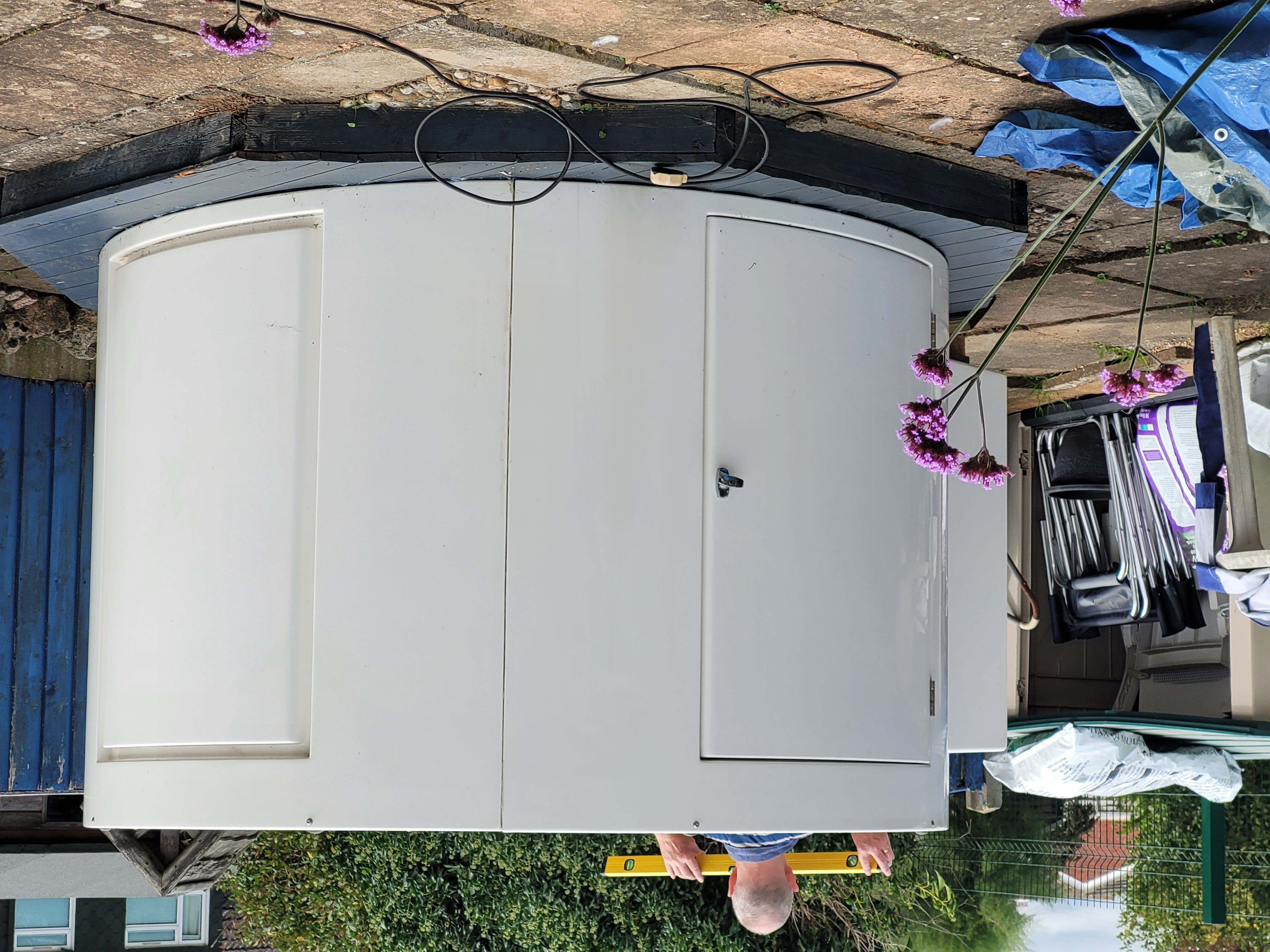
It is now Sunday, 27th August and today we erected the observatory walls. They were carried round to the correct position and placed on the old wooden floor.
Then we did a bit of shuffling to get them more or less centralised over the concrete plinth where the pier for the telescope is mounted. At this stage they were loosely bolted together too.
Everything was checked to make sure the walls were level and the position of each wall was marked with a black marker (basically drew round the outside and inside).
The next stage was to move one wall piece out, put sealant on the floor and down one edge of the wall and then move it back into position and re-bolted on one side.
This process was repeated on each side, so that all side and floor joints were roughly sealed. The level was then re-checked and the walls then bolted together securely and levels re-checked again.
So now the walls were in position and joined together. Then they got screwed to the floor and levels re-checked again.
Finally, the external vertical joins were re-caulked, and the external and internal joins at floor level were also sealed.
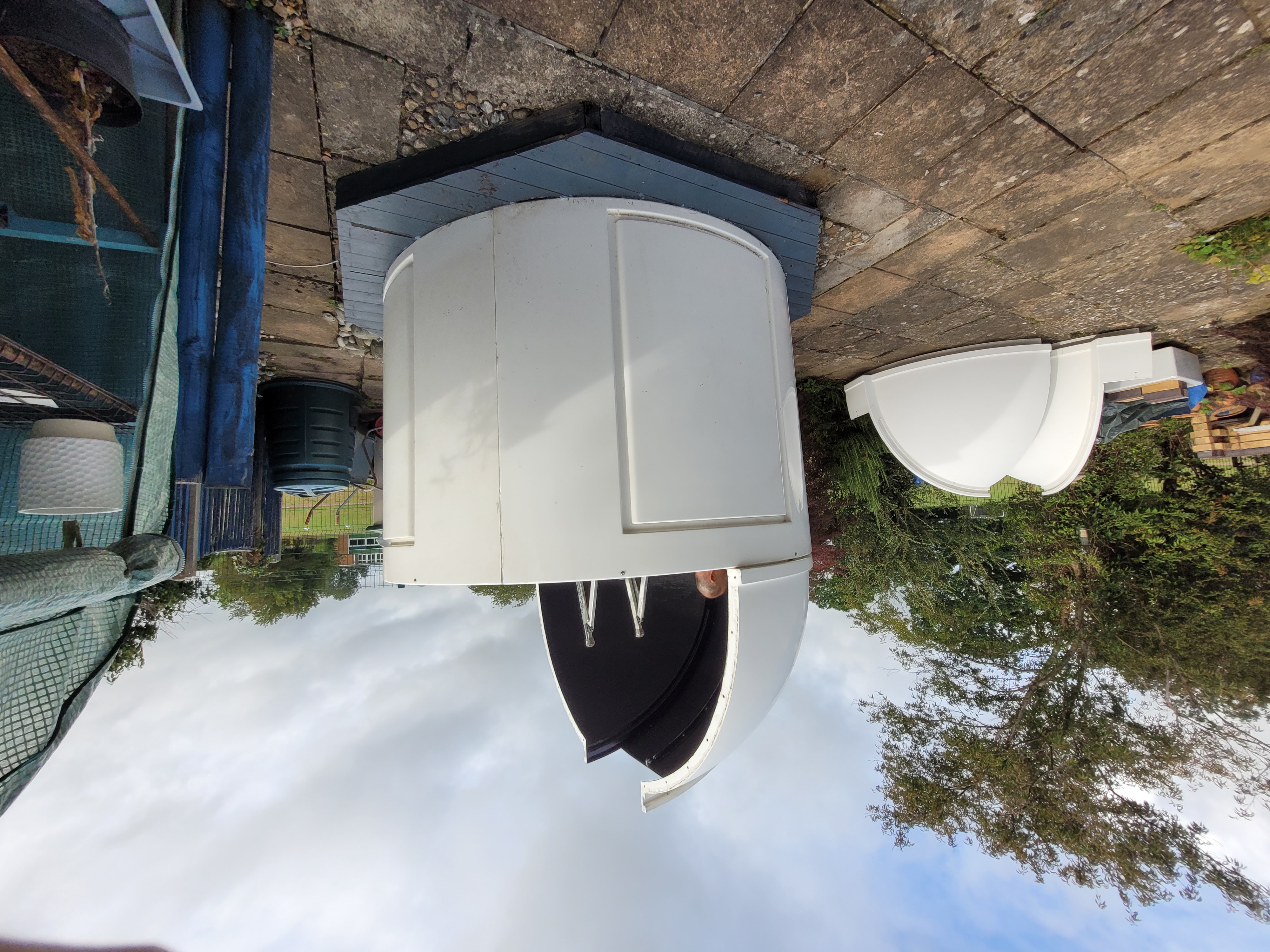
Today, Monday, 28th August we finished the construction.
The plans I downloaded from the Pulsar website and YouTube videos that I watched indicated that the dome should be put together completely and then lifted into place.
But we didn't have four strong blokes available to do the lift, so I devised a cunning plan instead.
Each dome quarter is light enough to be lifted by two people, so with Mrs Longthorn helping we put the dome quarters in place one at a time.
First one of the rear quarters, then the next and bolted them together.
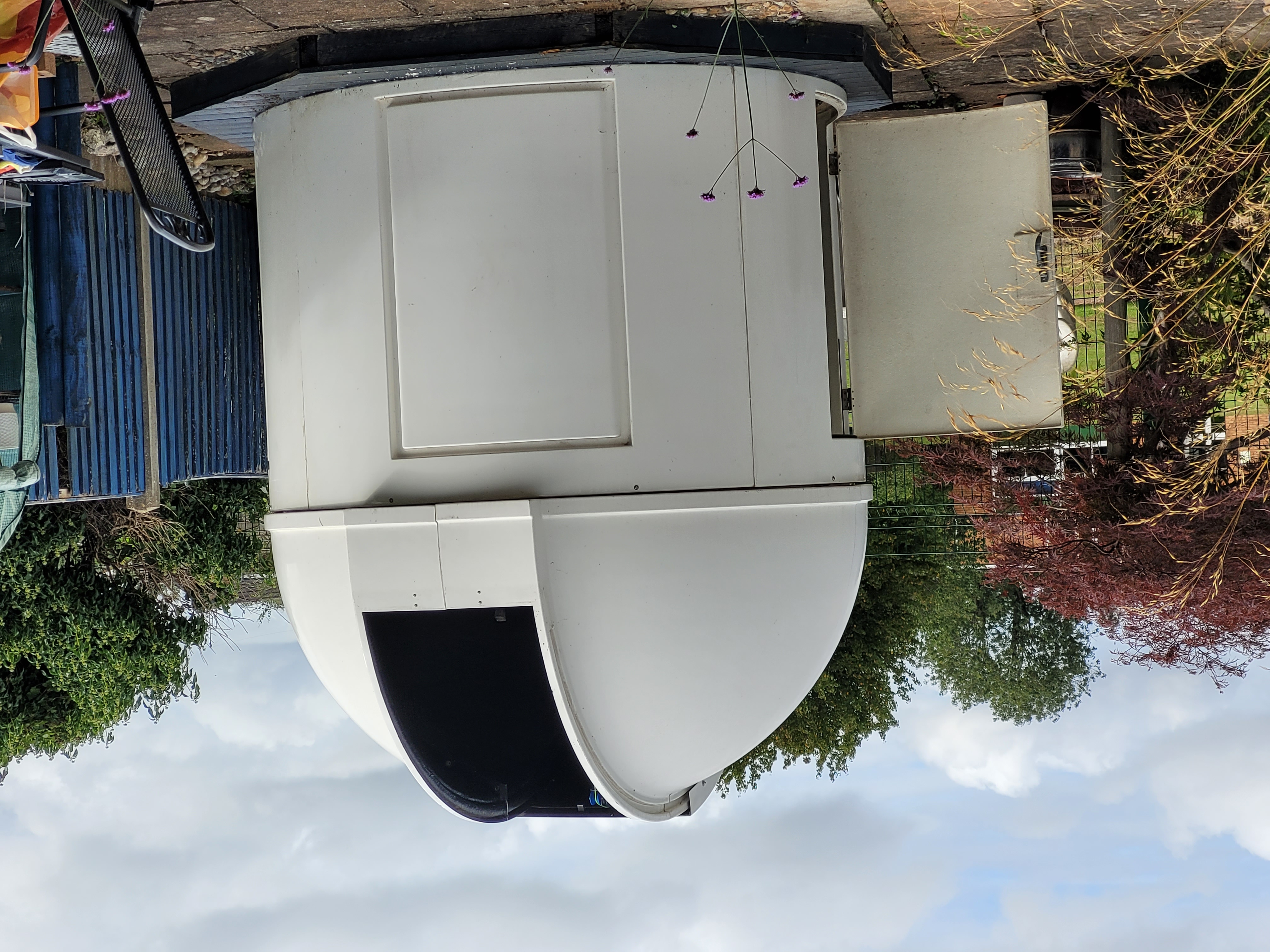
Once the two rear dome quarters were in place the shutter was slid into the available groove and then the two front dome quarters were assembled.
Now that the whole assembly is done, the rest of the bolting was completed and the dome checked for smooth rotation - which was working really well.
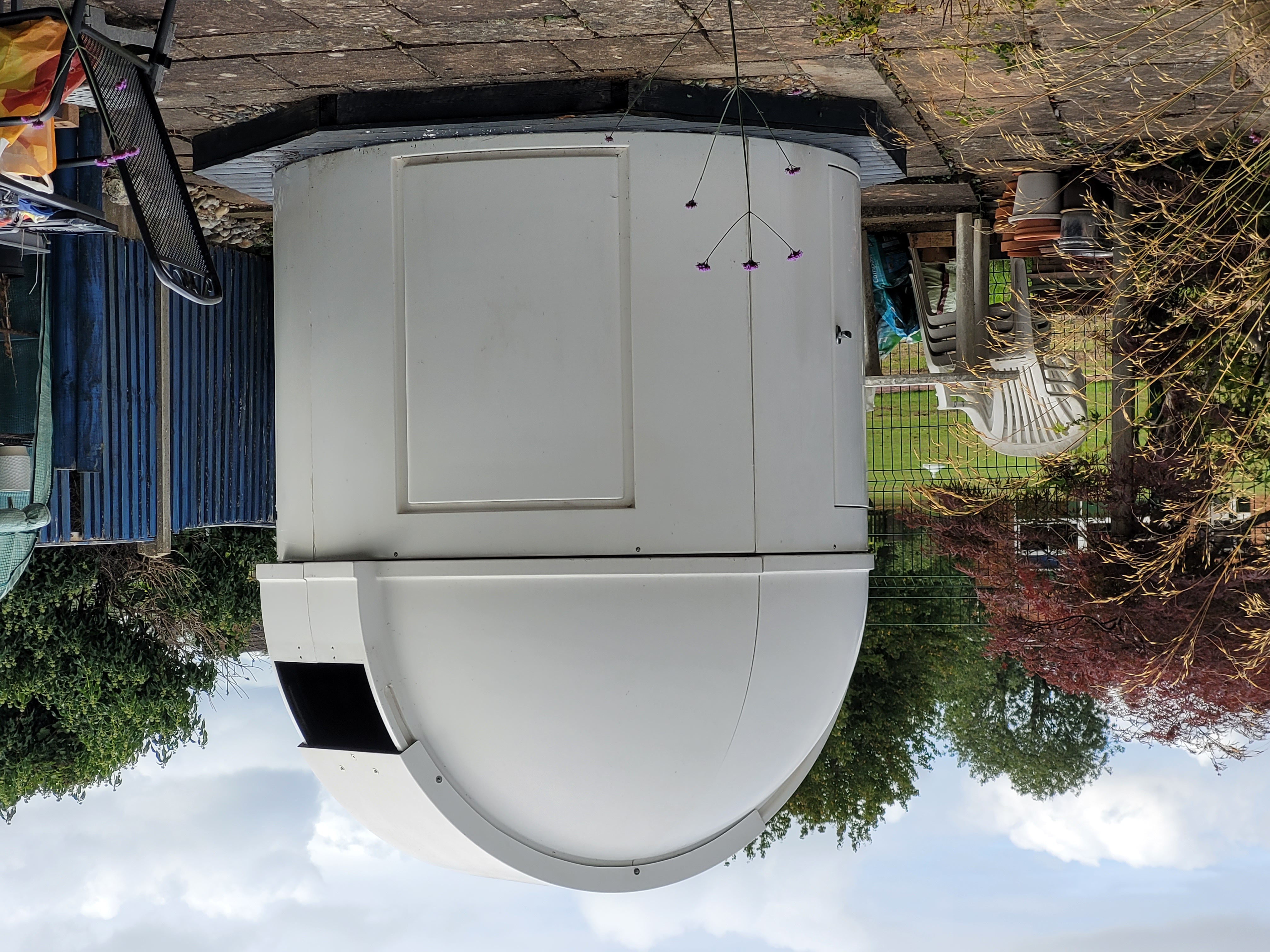
And here it is, more or less completed.
The cunning plan came to fruition, so now Cymbeline Observatory has risen from the ashes.
There are still a few tidy up jobs left to do, have a bit of a clean inside and out, lay the floor, put a work area into the pod, do the electrics etc..
Then I can think about getting the CEM40 into place and getting a telescope mounted ready for the continued operation of Cymbeline Observatory!
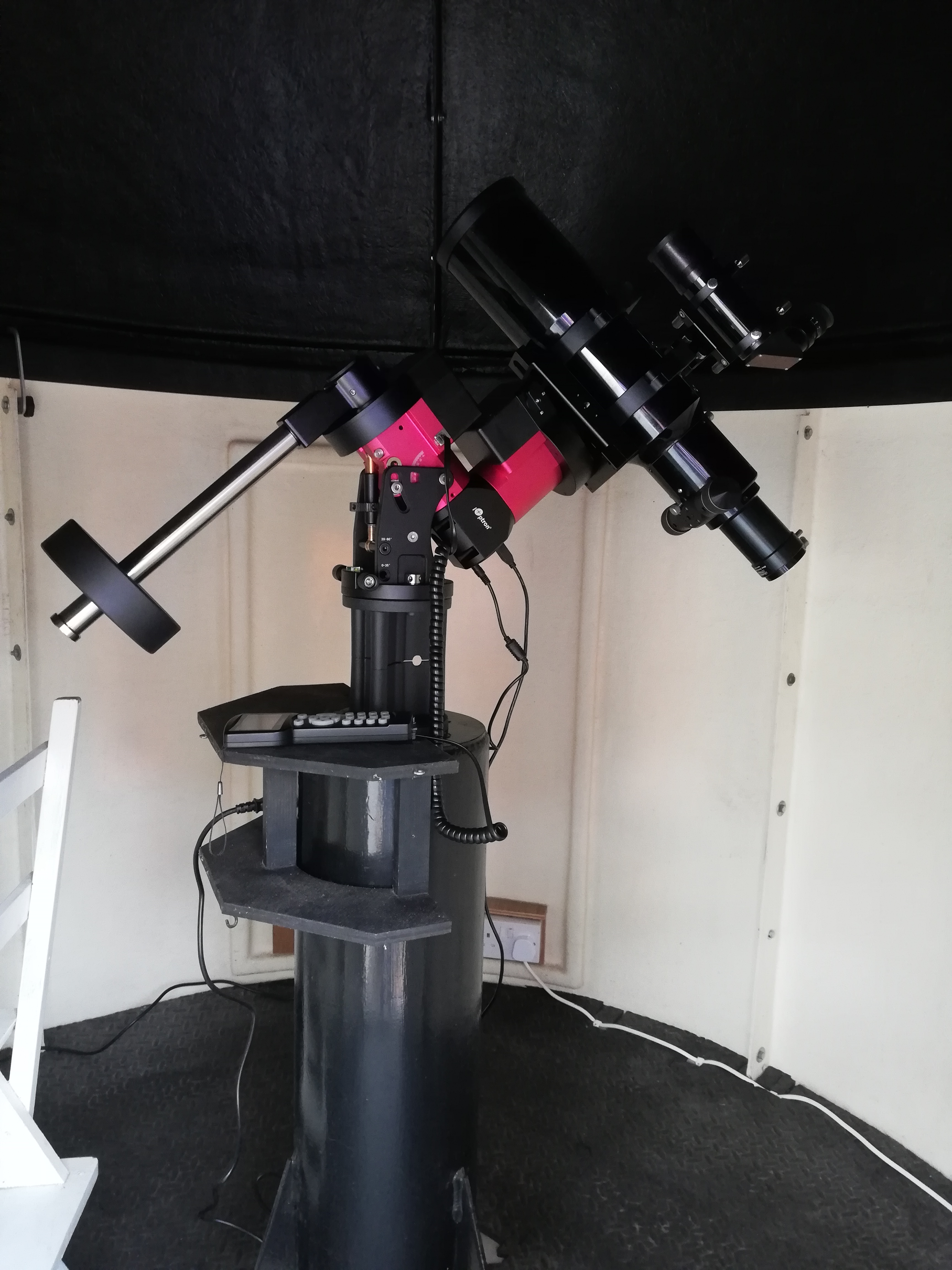
A few days on, following some additional sealing, getting the flooring laid and the electrics sorted the iOptron CEM40 was installed and set up (Friday 1st September) followed by my 100mm refractor.
The mount was then connected to the laptop I'll be using for finding objects - it has Cartes Du Ciel installed as the planetarium software that will be controlling the mount - and the software commissioned.
Next thing to do is to wait for a clear evening to get the mount properly polar aligned